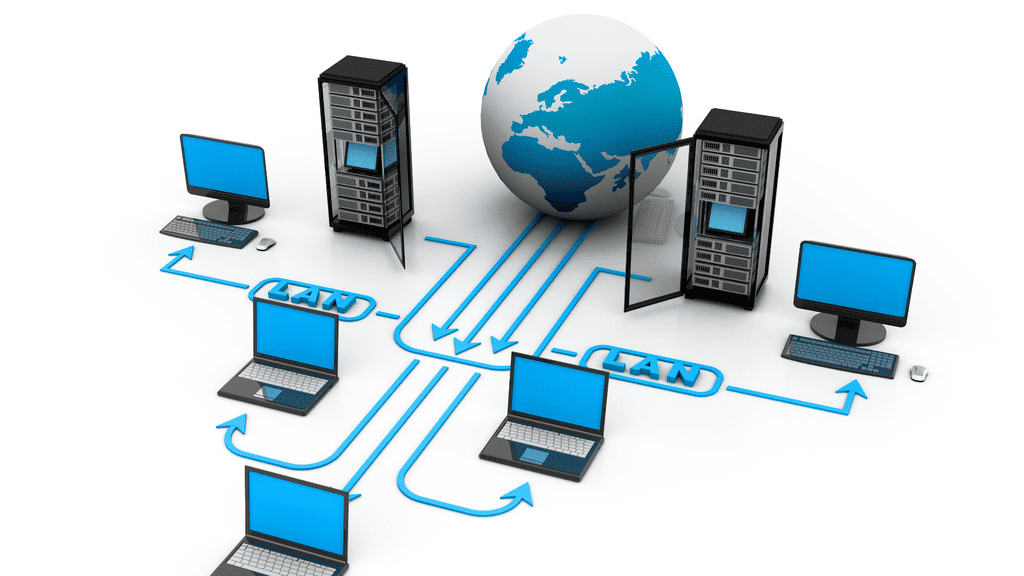IT Networking

IT networking services are crucial for establishing, maintaining, and optimizing network infrastructure within an organization or for individual clients. Here’s a detailed breakdown of the typical content and services provided in IT networking:
1. Network Design and Planning
- Needs Assessment: Evaluating the specific requirements for network performance, security, and scalability.
- Network Architecture Design: Creating a blueprint for network infrastructure, including topology, hardware, and protocols.
- Capacity Planning: Estimating future network needs and designing accordingly to accommodate growth.
2. Installation and Configuration
- Hardware Installation: Setting up routers, switches, firewalls, access points, and other networking hardware.
- Network Configuration: Configuring network devices, including IP addressing, VLANs, routing, and switching protocols.
- Wireless Network Setup: Installing and configuring wireless access points and optimizing Wi-Fi coverage.
3. Network Security
- Firewall Implementation: Setting up and configuring firewalls to protect against unauthorized access and threats.
- Intrusion Detection and Prevention: Installing systems to detect and respond to suspicious activities.
- VPN Setup: Configuring Virtual Private Networks for secure remote access.
- Security Audits: Regularly assessing network security and implementing necessary changes.
4. Network Monitoring and Management
- Performance Monitoring: Continuously monitoring network performance to ensure optimal operation and troubleshoot issues.
- Network Management: Using network management tools to configure, monitor, and maintain network devices and infrastructure.
- Bandwidth Management: Managing and optimizing bandwidth usage to prevent congestion and ensure quality of service.
5. Troubleshooting and Support
- Technical Support: Providing assistance with network issues, including connectivity problems, slow performance, and configuration errors.
- Troubleshooting: Diagnosing and resolving network problems, from physical connectivity issues to complex configuration errors.
- Remote Support: Offering remote troubleshooting and support for network-related issues.
6. Network Optimization
- Performance Tuning: Optimizing network settings and configurations to improve speed and efficiency.
- Load Balancing: Distributing network traffic across multiple servers or connections to enhance performance and reliability.
- Latency Reduction: Implementing solutions to minimize latency and improve user experience.
7. Data Backup and Recovery
- Backup Solutions: Implementing network-based backup solutions to ensure data protection.
- Disaster Recovery Planning: Developing strategies and procedures to recover network services and data in case of a disaster.
8. Scalability and Expansion
- Network Expansion: Adding new devices, segments, or locations to an existing network.
- Scalability Solutions: Designing networks to accommodate growth and increased demand.
9. Consulting and Strategy
- IT Strategy Consulting: Advising on network strategy, including technology choices, budgeting, and long-term planning.
- Compliance Consulting: Ensuring network design and practices comply with industry regulations and standards.
10. Custom Solutions and Integration
- Custom Network Solutions: Designing and implementing tailored network solutions to meet specific business needs.
- System Integration: Integrating networking solutions with existing IT infrastructure and systems.
11. Cloud Networking
- Cloud Integration: Connecting on-premises networks with cloud services and applications.
- Cloud Networking Solutions: Implementing virtual networks and services in cloud environments.
12. Training and Documentation
- User Training: Educating staff on network usage, best practices, and security.
- Documentation: Providing detailed documentation of network configurations, diagrams, and procedures.
13. Compliance and Regulatory Services
- Regulatory Compliance: Ensuring network infrastructure meets legal and industry-specific compliance requirements.
- Audit and Reporting: Conducting network audits and generating reports for compliance and performance evaluation.
These services are typically provided by IT consulting firms, managed service providers (MSPs), and network specialists, and can be tailored to meet the specific needs of different organizations or individuals.
